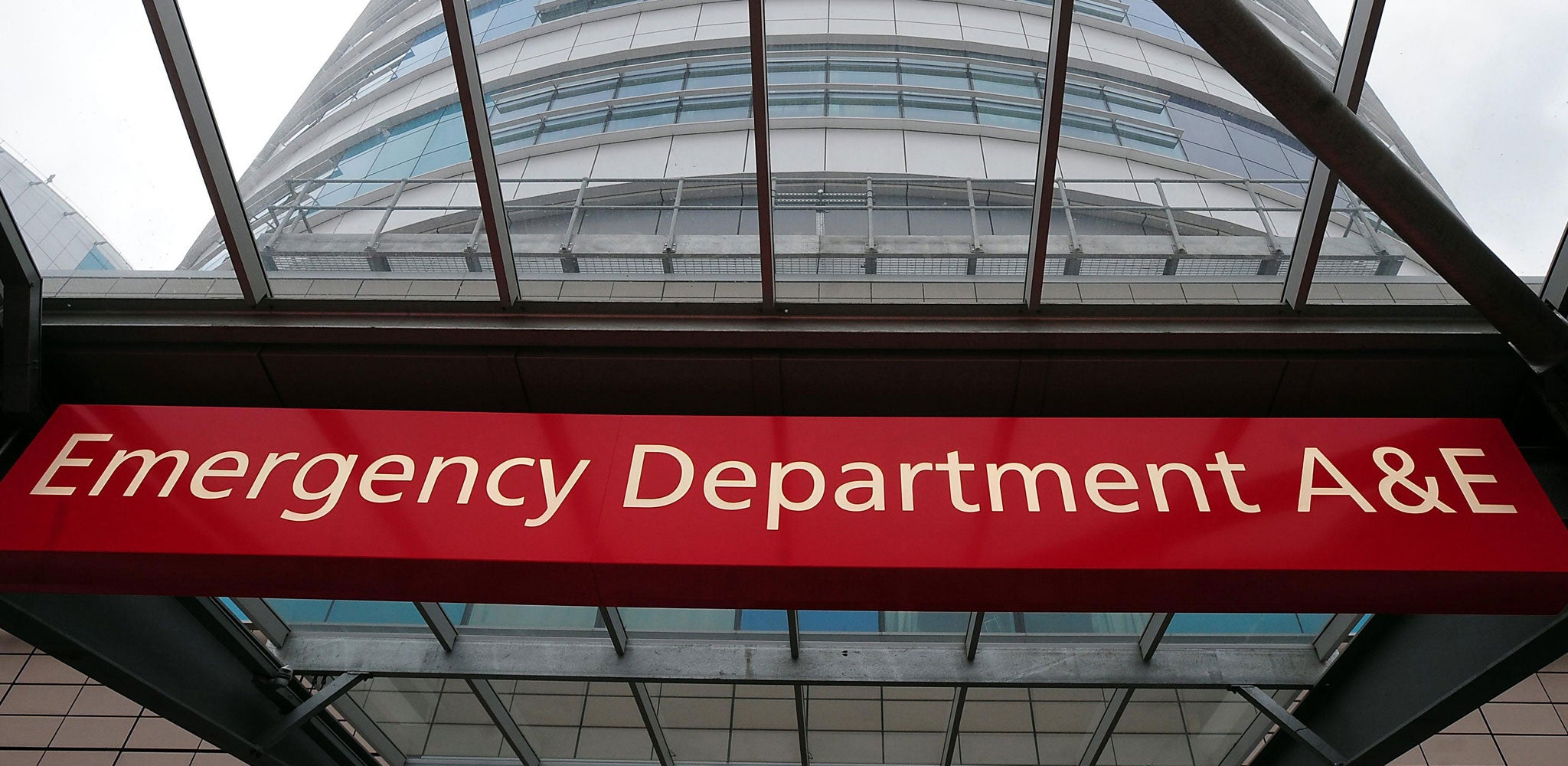'Not acceptable': Queen's Hospital Romford A&E criticised for keeping patients waiting 11 hours to be transferred to bed

Your support helps us to tell the story
From reproductive rights to climate change to Big Tech, The Independent is on the ground when the story is developing. Whether it's investigating the financials of Elon Musk's pro-Trump PAC or producing our latest documentary, 'The A Word', which shines a light on the American women fighting for reproductive rights, we know how important it is to parse out the facts from the messaging.
At such a critical moment in US history, we need reporters on the ground. Your donation allows us to keep sending journalists to speak to both sides of the story.
The Independent is trusted by Americans across the entire political spectrum. And unlike many other quality news outlets, we choose not to lock Americans out of our reporting and analysis with paywalls. We believe quality journalism should be available to everyone, paid for by those who can afford it.
Your support makes all the difference.Some patients arriving at an accident and emergency department had to wait more than 11 hours to be transferred to other parts of the hospital, a report has found.
Inspectors from the Care Quality Commission (CQC) found that the A&E department at Queen's Hospital, Romford, was still failing to protect people's safety and welfare.
They made unannounced visits in November and December to the hospital, run by Barking, Havering and Redbridge University Hospitals NHS Trust.
They found that people using the "Majors" area who required admission were waiting far too long to be transferred to other parts of the hospital - 5% waited more than 11 hours.
The report says the trust should be aiming to transfer 95% of patients who are being admitted to wards within four hours of arrival.
The inspectors also found that some people were being nursed on trolleys when they needed to be moved into beds. People were at increased risk of pressure sores, dehydration and falls.
The "Majors" area did not have any washing facilities or storage for personal possessions, and did not offer people the privacy and dignity they are entitled to.
Elsewhere in the department, personal information - including diagnosis - was displayed where anyone, including other members of the public, could see it. There were not enough consultant or junior doctors in A&E.
The report said: "We visited the emergency department at Queen's Hospital because we had identified major concerns about the care and welfare of patients during a previous visit in March 2012.
"We carried out this inspection to ensure they had made improvements, in relation to concerns identified about meeting waiting times and delays experienced by patients in receiving care and the quality of the care they received."
Another unannounced inspection, into maternity services at the hospital, found required standards were now being met.
Matthew Trainer, deputy director of CQC in London, said: "People who need to be admitted to Queen's Hospital through A&E are waiting far too long.
"No-one should wait 11 hours' plus to be transferred to a bed, but some of the people we saw during our unannounced inspection had done just that.
"The area in which they were waiting was not set up to deliver good quality care to the standard CQC expects.
"CQC's plan is to place a legal restriction on the number of people who can be admitted to the 'Majors' part of A&E if people already there have been waiting for too long.
"This is designed to protect people from the risk of harm, and to give the trust breathing space to make the changes it needs to make.
"We are meeting the Trust Development Authority and local commissioners next week to discuss next steps."
Trust chief executive Averil Dongworth apologised to anyone who may have experienced poor care, adding: "Improving performance in our emergency departments is the biggest challenge that we face, and is the area that is receiving the most attention from all parts of the organisation."
She added: "The CQC highlights in its report that Queen's A&E department was designed to deal with 90,000 attendances a year.
"We are now seeing around 132,000 people through the doors. It also confirms that Queen's receives more blue light ambulances than any other hospital in London.
"Dealing with this volume of patients is hugely challenging and requires a joined-up approach to ensure that the trust is supported by services in the community.
"I am pleased that our GP commissioners have committed to working with us to ensure that people can find alternative care closer to home and patients who don't need to stay in hospital can go home with the right support.
"A hard-hitting action plan is in place to improve performance in A&E."
This included opening a new surgical assessment unit from next Monday, introducing direct access for GP admissions so those patients did not need to come via A&E, and fundamentally changing working patterns so there was consistent 24/7 medical cover from experienced clinicians.
Ms Dongworth added: "We are still a long way from achieving the A&E performance target, but there have been definite improvements since the CQC inspectors visited in November and December.
"However, the experience of our patients is far more important to us than a set target.
"Our frontline staff are making immediate changes - such as introducing hourly care rounds and regular meal services - to improve the care of patients."
PA
Join our commenting forum
Join thought-provoking conversations, follow other Independent readers and see their replies
Comments